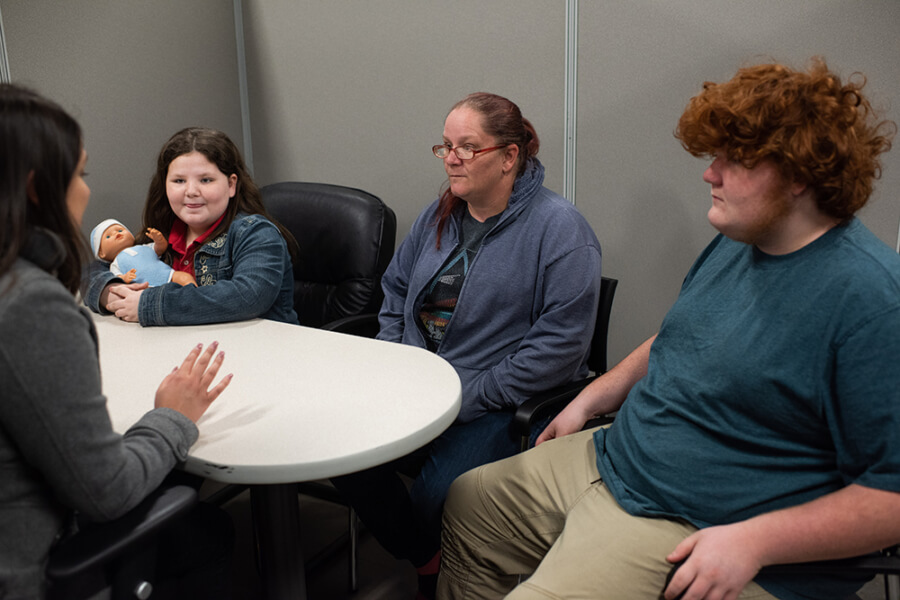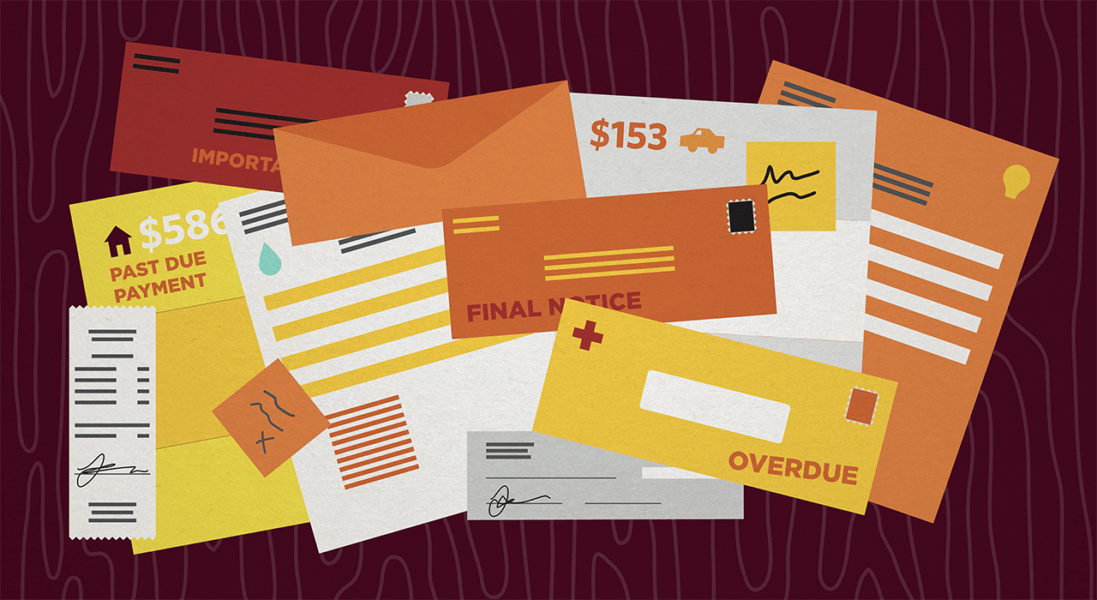

Editor’s note: This month, the H. E. Butt Foundation announced a partnership with Family Independence Initiative that’s intended to address the challenges described in this story. For more, see coverage in The Rivard Report, San Antonio Business Journal, and our press release.
Joy Collins looked sheepish as she discussed last year’s Christmas shopping with Carla Castro, her case manager with the SA Hope Center. The two women were meeting regularly at Ogden Elementary School to help Collins budget her spending on rent, electricity, and water bills.
No matter how well Collins followed her budget, there was never any wiggle room for emergencies or extras. One of her regular bills usually had to wait.
She listed off the things she bought for her kids, a teenager and an elementary schooler, at the Goodwill Clearance sale—items that cost between $1 and $5 dollars. The total wasn’t more than $15.
Still, Castro warned Collins not to get carried away. “It adds up,” Castro said.
Collins chuckled. She knew that all too well.
Neither of them knew what was coming. Last Christmas, reports of a novel coronavirus were just beginning to emerge. Once the outbreak hit the United States this spring, resulting in a nationwide economic shutdown, things got worse—particularly for the millions of Americans like Collins whose monthly bills already far exceeded their monthly income.
For them, the shutdown is just an intensification of the hardships they were already living with.
If you’re one of those Americans, you know that help for those struggles is very hard to find. And when you do get the help, sometimes it makes matters worse.

Since the Great Depression, the federal government has offered aid to families like these. Many of us know this aid as “welfare.” Child care allowances and other components of welfare—now funded by a federal grant called Temporary Assistance for Needy Families (TANF)—provide families with needed support while they look for jobs or search for resources to help them stabilize their financial situation.
But it can be tough to qualify, and remaining qualified can be even harder.
In Texas, families bringing in less than $401 per month with less than $1,000 in assets can receive TANF. Social programs like Medicaid, the Supplemental Nutrition Assistance Program (SNAP), housing vouchers known as Section 8, and others have different monthly maximum income limits.
The TANF law, which was passed in 1996, was designed to drive particular social outcomes, including keeping kids with their parents, discouraging out-of-wedlock pregnancies, promoting marriage, and encouraging work.
Collins checks all those boxes. She’s married, her husband works, their children are in school, and Collins is home with them in the afternoons. But at $25 per hour, her husband makes about ten times the amount that would qualify the family for welfare, and around $1,000 per month too much to qualify for food assistance.
Yet the family is being evicted after a missed rent check. The local utility company cut their power once last year. Collins said her family makes too much to qualify for assistance programs. But they make far too little to get by.
“I’ve noticed in this city that if you’re not trying to help yourself, you can get all the help you need,” Collins said. That may sound harsh, but it’s an understandable perspective.
Collins feels betrayed by the system that seems intended to help people just like her. She did things the way you’re “supposed” to: marriage, family, work. But she’s trapped in the dilemma of the working poor.
Megan Legacy, the executive director of the SA Hope Center, says they see this problem all the time—the problem of people falling off what is known as “the benefits cliff.” That’s the point where benefits suddenly cease, and families are sometimes in a worse position than before.
She tells the story of a young mom who worked hard to get her GED and job training, received two job offers at $15 per hour, but then realized that her new income would not cover all that she would lose in government assistance.
“She could not afford to replace those things,” Legacy explained. The young mother was devastated: she couldn’t take either of the jobs.
“Hard work means nothing if you can’t take care of your kids,” said Legacy.
That’s Collins’ story, too.
Ten years ago, Collins and her husband qualified for full federal benefits. They were making next to nothing, living with family. As his pay increased to $11 per hour, benefits evaporated. Collins said they were basically on their own, no longer qualifying for much federal assistance or even most local assistance programs.
Their family’s SNAP benefits disappeared when her husband hit around $20 per hour. They had a teenager at home and another growing child.
The Collins family didn’t want to depend on the government, but they still needed help—from family members, churches, and nonprofits. Those sources dried up just as fast.
More than once, they have been homeless, staying with family until the offer wore out.
“We spent a lot of time bouncing from place to place,” Collins said.
With each pay increase, instead of things getting easier, they got tighter.

This next section calls for careful reading, because we’re trying to answer a complicated question: How much does it really take to survive?
The United Way has created one answer: an index called the “Asset Limited, Income Constrained, Employed,” or ALICE. It measures how much families like the Collinses need to be economically stable. In Bexar County, the 2016 ALICE index put survival for a family with two parents and two children in school at $46,752 per year, or just over $23/hour. If those children are too young to be in school, it jumps to $59,952.
The catch for the Collinses was housing. The least expensive house they could find near school and work was $1,200 per month. The ALICE index allows for $929 per month in rent, which is getting increasingly difficult to find as San Antonio housing prices soar. The Collins’ income qualifies them for some housing assistance through the San Antonio Housing Authority, but demand for affordable housing is high, and families with a history of evictions and missed rent checks are at a disadvantage.
The lowest wage for a household with a child on the ALICE stability index is $30 per hour—that’s for a single parent with one child in school. The minimum wage in Texas is $7.25 per hour.
Expecting families to go from minimum wage to $30 per hour in one jump is unrealistic, Legacy said. For wage workers, that jump usually takes years. It’s not really a jump, either. It’s more like a climb. A free solo without harness or belay, relying on your fingertips to maintain your ascent.
The ALICE index calculates two income levels: survival (as described above), and economic stability. Surviving means getting by without emergencies or surprise costs. Economic stability allows families to weather illness, car repairs, and other large unforseen costs. To be economically stable in Bexar County, the ALICE index estimates that their family would need $87,372 per year. The family with two young kids would need $101,124 per year.
The climb from welfare to economic stability is precipitous and treacherous, full of impossible choices.
Last December, the Collins family was in survival mode—hoping they could keep climbing up that cliff, and that no more surprises were coming.
